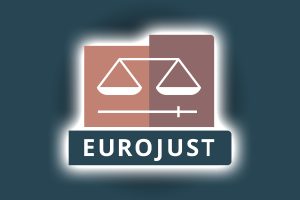
Rapid technological development has enabled widespread digitization of organizational structures, helping to create a more sustainable and efficient enterprise supply chain. During the last two decades, ongoing investment and adoption of new technology have allowed organizations to upskill their workforce, build effective communication channels, and create a more interactive virtual workplace.
While newer software tools and digital resources have witnessed broader appeal within private industries, other sectors with less digital involvement and inadequate financial investment have seen slower levels of technological adoption, despite Artificial Intelligence (AI) being a strong driver of change and forward-looking development.
Traditionally, the education sector, and more importantly, the classroom setting have seen slower use of technology. However, following the pandemic, educators and teachers have realized the scale of opportunities that come with using technology as a way to make lessons more intriguing, manage their planning structures, and help create a more engaging classroom experience.
The Rise of EdTech
The virtual and digital classroom has moved beyond traditional tools – Google Teams and Zoom – and has started to embrace the continuous development of newer, more advanced software tools that can help students and educators improve their performance within the classroom.
The establishment of edtech or educational technology has allowed big-tech companies and other household names to develop a range of digital services focused on improving the overall classroom setting and the teaching experience.
Generally speaking, edtech refers to the use of software and hardware components, and collaborating this with in-person teaching to create a more digital learning environment for students. Edtech encompasses a variety of tools and resources and is focused on providing real-time solutions for educators, enabling them with more efficient and optimum teaching experiences.
While the development, and more importantly adoption of these technological tools have been typically slow, better access to the Internet of Things (IoT), and Software as a Service (SaaS) have made edtech tools more attractive for educators and private investors.
Research by McKinsey and Company, a global consulting firm, estimates that venture capital investment in the global edtech sector will reach more than $20.8 billion in 2021, a representation of 40 times more than the amount invested eleven years earlier in 2010.
Do you know which under-the-radar stocks the top hedge funds and institutional investors are investing in right now? Click here to find out.
Was it perhaps not for the pandemic that helped fast-track this development, educational technology has now become an integral part of the classroom setting, whether this is for the facilitation of in-person or virtual teaching.
EdTech Tools For The Digital Classroom
As technology begins to play a more important role in the classroom, educators will continuously look to adopt more advanced tools that will improve their lessons, further enhance student interactions and engagements, and assist with the management of course materials and lesson planning.
In-Class Lesson Planning Software
The first, and perhaps most important category is the use of software to enable more effective and engaging classroom lessons and the presentation of course materials.
PlanBoard
This platform enables teachers to create a digital playbook and utilize lesson templates to create more compelling presentations. PlanBoard is a popular platform for various grades and levels and can be directly linked with U.S. state and Canadian curriculum standards.
The interactive platform allows for easy use and lesson planning and can be used both online and offline. The media function allows teachers to upload new content, and use this within their lessons. With PlanBoard, educators have access to analytical tools as well, helping to track student progression and performance.
Nearpod
Nearpod can be used in different classes and lessons, especially for teachers with younger students who require intuitive lesson planning. This platform allows teachers to create more interactive and engaging lessons with the use of available templates and other multimedia materials.
One of the most attractive features of Nearpod is that teachers can make lessons available for students to download onto their mobile devices. The platform is free to use, and students can use the application both online and offline. This application is suitable for a variety of classes, and teachers can use the materials available on the platform to craft more lively, fun, and interesting lessons for students.
Mentimeter
Next on the list is Mentimeter, a free platform that provides near-endless opportunities for teachers. With Mentimeter, teachers can further streamline their lesson planning, and use Educational templates to create more interactive lessons.
Mentimeter comes with a variety of features, such as the Quiz Questions, which allows students to submit anonymous real-time answers. This feature is most suitable in big classes, either at the university level or even in situations where students are less confident to give responses in a classroom setting. Overall, Mentimeter can help teachers build more robust lessons, and create straightforward activities that will keep students at any level engaged.
Organizational Software
The following category looks at various platforms that allow teachers to plan, organize, and execute their lessons better. This software helps to keep all of their important information in one place.
Additio
With Additio, educators can keep better track of student attendance, class activities, and weekly planners. The platform helps to centralize critical organizational and classroom management, enabling more engagement between teachers and students beyond the classroom.
Additio allows teachers to build a weekly or monthly calendar, and include other records, such as attendance, observations, important notes, and extra curricular activities. More than this, the platform is available to students, meaning they can access important information and resources at any given time.
Additionally, the platform acts as a communication portal between teachers, students, and parents. With this, both students and parents can contact teachers, and teachers can also track any student’s progress. While it takes a bit of time to get used to the interface, Additio is a valuable tool for effective classroom management.
Socrative Teacher
Another classroom management platform, that is both desktop and mobile-friendly is Socrative Teacher. This platform can be used across various teaching levels, from primary school to high school, and is even used in the corporate environment.
With Socrative Teacher, educators can design their classroom management around their needs, while also making the process a lot more enjoyable with games, and a range of available templates.
For in-class use, there are options to create custom quizzes, and the backend allows teachers to review student reports with infographics and other visualizations. Socrative Teacher makes learning and understanding data more fun and interactive and is available for free to students.
Attendance
Teachers with multiple classes and students can use Attendance to keep better track of which students have been attending class and create a report that measures their performance that can later be used to help assess student behavior and forward-looking guidance.
With Attendance, teachers can create custom lists for different classes, which can then be used to keep track of individual student classwork, studies, projects, and assignments. The platform implements easy-to-use prompts and tools for teachers, allowing them to keep better track of student records, and to help verify student reports more effectively.
One of the downsides of this platform is that managing various students and classes all at once can feel somewhat overwhelming in the beginning. Additionally, teachers need to constantly keep track of different projects and information on the platform to ensure they use the data more effectively and to their best advantage.
Classtree
Perhaps less organizational, and more focused on providing teachers an effective and safe way to stay connected with parents. This platform aims to eliminate any potential communication barriers, allowing teachers the ability to directly contact parents and provide them with the necessary student performance reporting.
You can think of Classtree as the classroom version of Messenger of iMessage, as it has a one-on-one chat portal, but also provides additional features that can help teachers and parents have better control over student performance.
As a stand-alone communication platform, Classtree comes with all the bells and whistles. Teachers can send parents surveys and attendance records of their students. Additionally, they can have better analytical data to create student reports, all the while being able to directly share this information with parents.
Student-Teacher Collaboration Software
The final category focuses on bringing students and teachers closer together, both in terms of in-class and virtual learning. This software enables teachers to give students more freedom to interact and engage with lessons through technology such as pop quizzes, videos, and presentations.
Slido
Instead of handing out individual question papers, teachers can now allow students to answer questions using Slido. The platform gives teachers the ability to share an event code with students, which they can access through their web browsers. Teachers can then provide questions and possible answers, which students can respond to using the platform.
This platform helps to make presentations a lot more interactive for students of any age, as results or answers are displayed in real-time. Teachers can remove results, and statements or answers that receive multiple upvotes will move to the top of the list quickly.
Slido can also be used in a university setting, or even corporate training, as presenters can set up polls and surveys, which can then be answered by attendees. Through this, presenters, and more importantly, educators can have an active and visual presentation of student queries, questions, and answers.
Moodle
Moodle is a more robust software platform that houses several collaboration tools and features geared at educators across various education levels. One of the significant features of Moodle is that it allows for the mass integration of multiple students, and educators can include projects, assignments, and peer and self-assessments.
Moodle is free to use for both students and educators and is available on Open Source. Additionally, Moodle allows educators to customize the platform to their needs. While there are a lot of intricacies, and it takes a bit of time to get the hang of everything, Moodle provides efficient classroom management and collaboration for educators.
Explain Everything Whiteboard
Educators who want to have more control and versatility in their classroom management can leverage Explain Everything Whiteboard to interact with students, collaborate on projects, and provide students with an open communication portal.
While the platform is mainly used to create an interactive interface, whereby students and teachers can write and share notes, create images, and share other media, Explain Everything Whiteboard also allows teachers to access student records and share important resources via the platform.
This creative collaboration tool allows for better attendance during online lectures and classes. Educators can record their videos or lessons, which can then be shared with students. The platform also features built-in voice chat and video link sharing.
Why Is Edtech Important For The Classroom?
Edtech enables educators, schools, and universities to address issues of accessibility. With the necessary edtech software, educators can ensure that educational materials and resources are more widely available to all students, regardless of socio and economic background.
Following the pandemic, educational technology has become increasingly important for teachers and educators, to provide students with valuable classroom experiences, despite having to conduct classes virtually.
The pandemic allowed for the widespread deployment of educational technology. The World Bank estimates that “Learning Poverty” in low-income countries could potentially rise from 53 percent to more than 63 percent due to the limited availability of technological resources, school closures, and minimal intervention that promotes the adoption of edtech software.
Learning loss isn’t only present in low-income countries, and there are multiple instances where a lack of critical resources, especially technology, can directly make an impact on the classroom experience for students.
One research study found that roughly 86 percent of eighth-grade teachers have agreed that integrating some technology into lessons and presentations is important, and directly contributes to the learning experience.
Even more, a different study found that 90 percent of teachers and educators believe that with the use of technology and software, they can further expand their lessons, and enable a more collaborative classroom.
While there are still a lot of obstacles that may hinder the successful application of edtech, it remains a critical component for the advancement of student-teacher engagement and collaboration, but more importantly, helps to optimize classroom management, and ensures greater autonomy for teachers.
Published First on ValueWalk. Read Here.
Featured Image Credit: Photo by RF._.studio; Pexels; Thank you!
Source link




